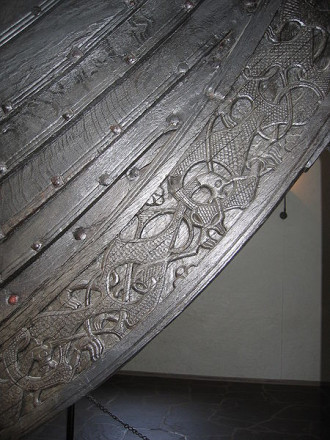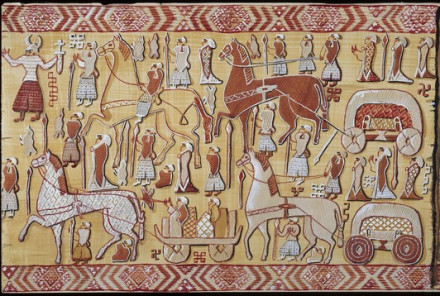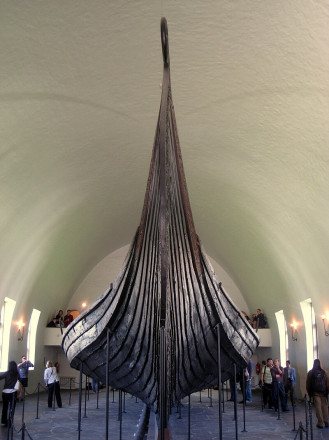History
The Oseberg ship was found in a large burial mound at the Slagen farm in Vestfold, Norway and excavated in 1904. The ship was built around 815-820 A.D. Afterwards, it was turned into a burial mound for two women of high social standing. Underneath the ship was a thick layer of blue clay, while the mound itself consisted of turf. This explains the excellent state of preservation of the ship and the other objects of wood, leather and textiles that were found in it. With very few exceptions, these are objects that never survive in graves of the Viking period.
The mound was plundered in ancient times, perhaps explaining why no jewellery or other precious metal objects were found in the grave.The bow and stern of the ship are elaborately decorated with complex wood carvings in the characteristic 'gripping beast' style, also known as the Oseberg style.

Oseberg textiles
Amongst many other discoveries, the Oseberg grave chamber also contained the largest and most varied collection of textiles and textile tools that has ever been found in a single Viking grave. It is without equal in Nordic prehistory. The collection consists of a number of fragmented tapestries and pattern woven blankets of wool and linen, tablet woven braids and a large collection of cloth fragments, which come from clothing, sails or tents, rugs and so on, and in addition remains of silk fabrics and silk embroideries. The fragments were all in a bad state and several reconstructions, such as the one below, were made over the years. The textiles mainly depict religious and mythological scenery, making this find even more unique.

Description
Clinker built ship of oak.
Designed for rowing and sailing.
The top strake had 15 oar holes on each side.
Although seaworthy, the ship has a relatively light build, and it is thought to have only been used for coastal voyages.

| Speed | 10 knots ~ 12 mph (19 km/h) |
|---|---|
| Length | 39 ¼ feet (12 m) |
| Width | 16 ½ feet (5 m) |